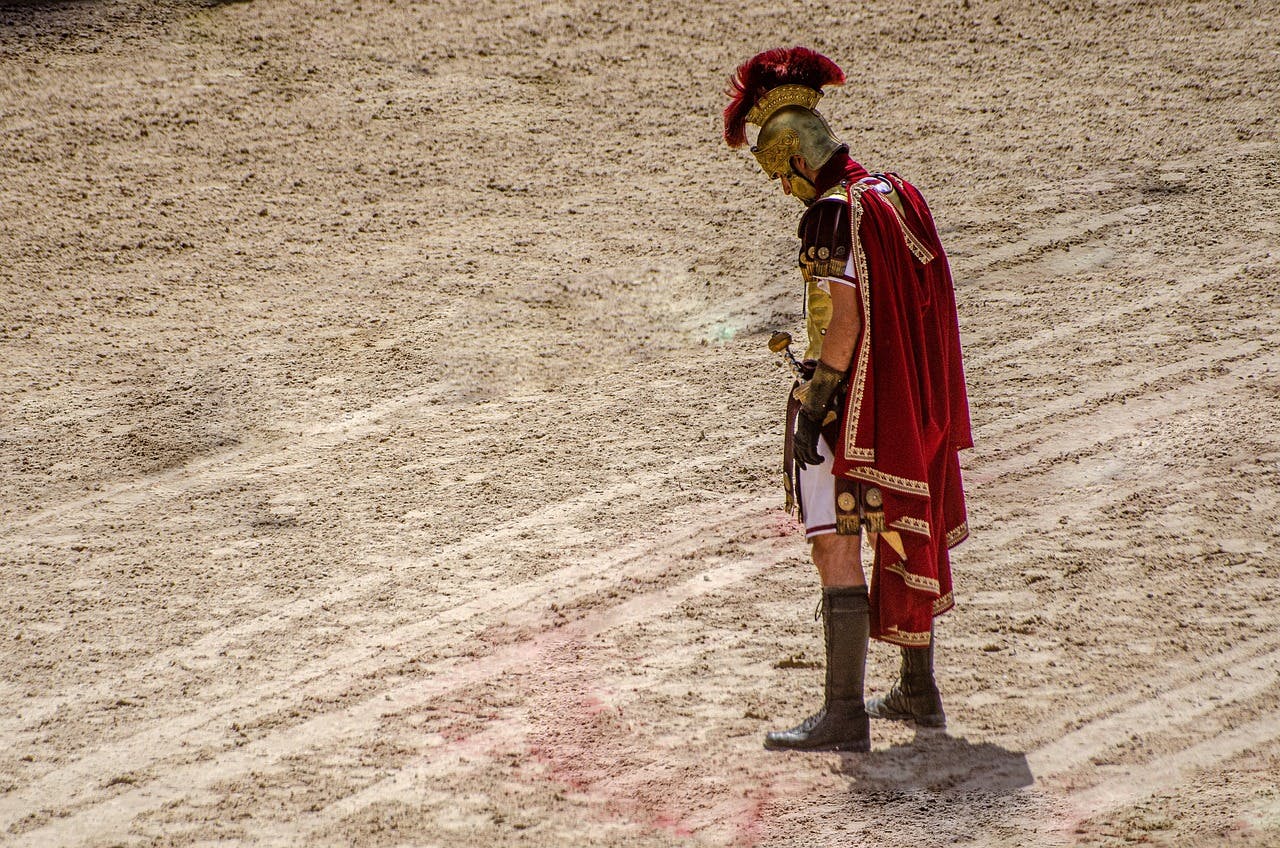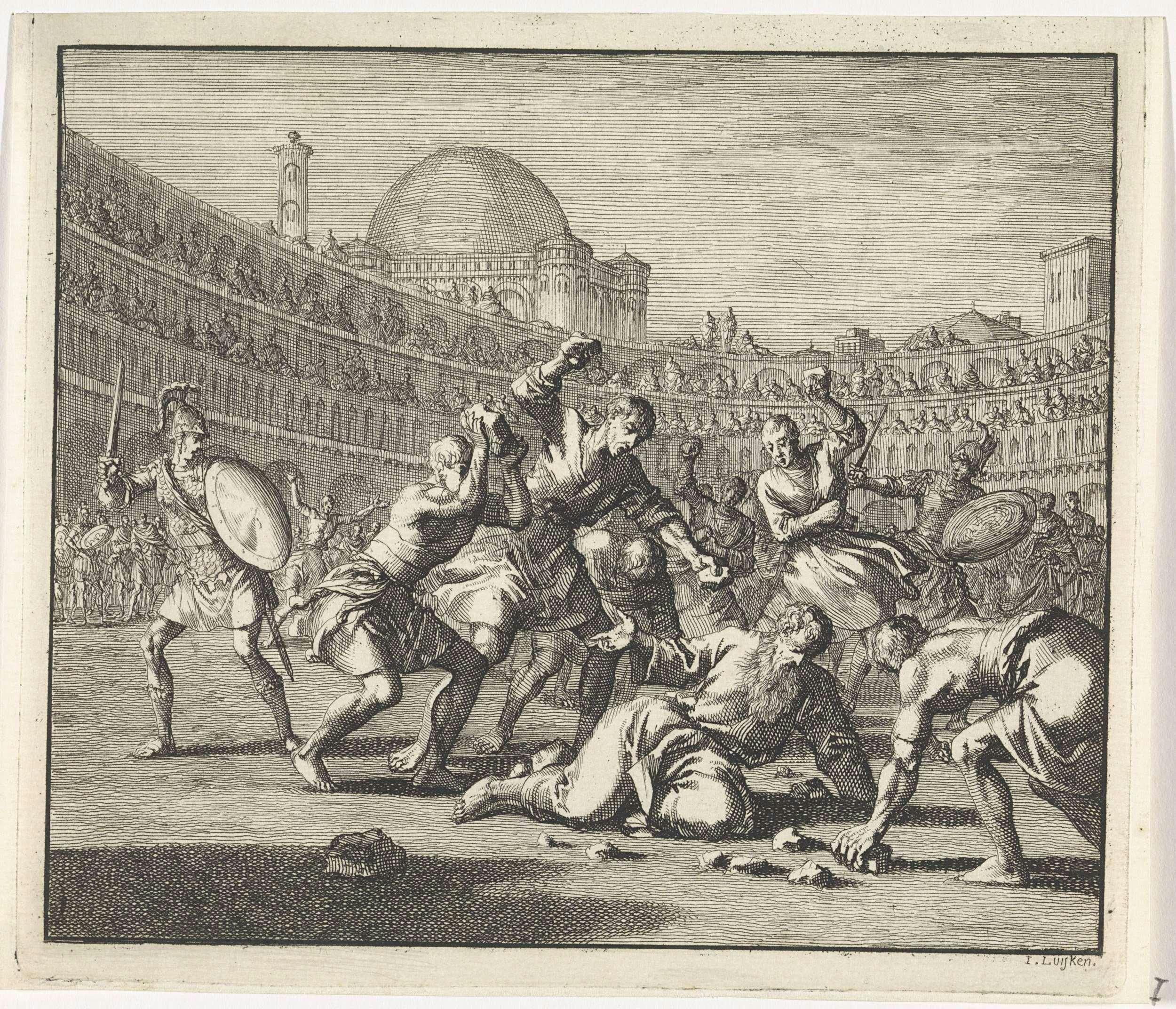This is the story of how one man turned sport into sorrow—and gave spark to human dignity.
It was roughly 391 AD, and the Gladiator Games had ruled Roman culture for some 700 years. The bloody duels between prisoners, slaves, and voluntary warriors—often held in the world-famous Colosseum—filled the grandstands. The violence and bloodshed weren’t only a form of public entertainment, but used to mark important moments like military victories.
2,000 years later, it’s easy to judge these games as barbaric—and they certainly were—but their impact still ripples through the millennia. (I know I won’t be the only one seeing Gladiator II multiple times while it’s in theaters—cheering on what are, thankfully, great practical effects instead of death blows.)
The most powerful empire in the history of the world had committed itself to the Gladiator Games for a millennium, so where did they go? Why aren’t we hosting similar duels at Madison Square Garden now?
Humanity didn’t wake up on its own. It was shaken from its slumber by a follower of Jesus. Enter the ring, Telemachus.
We don’t know much about Telemachus, except that he was a third-century monk-hermit, living in the wilds of Asia. Coming to Rome on a spiritual pilgrimage, he happened into the city in the aftermath of an important military victory, finding the Gladiatorial Games revved up into a fervor as a way to celebrate. Just a few hundred years after the life of Jesus changed Earth, Telemachus found himself on a collision course with Rome’s culture of death for sport, and was determined to bring it to an end.

And Telemachus wasn’t alone in his conviction. Generations of Christians had been speaking out against the Games over the years. As the fledgling faith spread across the Roman Empire, the biblical belief that all human life was sacred (because it was made in the image of God) rubbed up against the kill-or-be-killed spectacle in the Colosseum. It was also pretty difficult for these early Christians to reconcile the Games with God’s commands to not practice human sacrifice, not to murder, and to love your enemies. Despite the pushback, the matches raged on.
But on this day, faith pushed him to take action. Hearing of a routine match in the Colosseum, Telemachus entered the arena, lept down into the playing field, and sprinted between two gladiators, attempting to hold them back from one another. He then looked up to the crowd, as thousands of gladiators before him had done—this time, not to seek their approval to kill, but to call for life to win.
“Do not requite God’s mercy in turning away the swords of your enemies by murdering each other!” he shouted.
Among the bloodthirsty spectators, the 17-word sermon fell on deaf ears.
“This is no place for preaching!” they yelled back. “The old customs of Rome must be observed!—On, gladiators!”
The two fighters tried to continue, but Telemachus would not remove himself from between them. He put himself in harm’s way to physically demonstrate a spiritual truth: their lives were more valuable than this deadly game.
The gladiators, enraged with the interference, stabbed Telemachus. Moments later, the crowd began to hurl stones, or any other object they could get their hands on, at the dying do-gooder.
As the dust settled, and Telemachus lay slain before them, something in the crowd shifted. The horrible realization that they hadn’t just cheered on a death, but had actively taken part in it, was impossible to escape. Shock gave way to remorse, which gave way to grief. They were murderers (or at least affirming bystanders)—and a slain Telemachus was their clear and irrefutable evidence.
According to Theodoret of Cyrus, an ancient theologian living a generation after Telemachus, from the day our hero Telemachus fell dead in the Colosseum, no other gladiatorial contests were held ever again.

That means, the last man to die in the Colosseum wasn’t a bested warrior, pleading for his life; it wasn’t a hardened war hero at the end of his prime; it wasn’t a young man searching for approval and glory from the crowd. It was a follower of Jesus, laying down his life as a sacrifice to save the lives of others. Looks like Jesus was right about his followers doing the things that he had done.
The martyrdom of Telemachus isn’t going to be a headline of Gladiator II. He wasn’t mentioned in the now-classic original, Gladiator, and his story will likely never hit the big screens. But his life, and sacrificial death, had a larger impact than any of those movies—by putting an end to the Gladiatorial Games, he likely saved thousands (if not more) of innocent lives, even if those lives were at times offered voluntarily and competitively.
Telemachus believed what the God of the Bible said about the inherent value of life. No matter where we come from, what we look like, where our life has been, or where it’s headed—there is a God who has his fingerprints on all of us.
And that truth is not only worth dying for; it’s worth living for.
Disclaimer: This article is 100% human-generated.
Reflections to share? Got an idea for an article? Email us at articles@crossroads.net
At Crossroads, we major on the majors and minor on the minors. We welcome a diverse community of people who all agree that Jesus is Lord and Savior, even if they view minor theological and faith topics in different ways based on their unique experiences. Our various authors embody that principle, and we approach you, our reader, in the same fashion. You don’t have to agree with every detail of any article you see here to be part of this community or pursue faith. Chances are even our whole staff doesn’t even agree with every detail of what you just read. We are okay with that tension. And we think God is okay with that, too. The foundation of everything we do is a conviction that the Bible is true and that accepting Jesus is who he said he is leads to a healthy life of purpose and adventure—and eternal life with God.
Sources:
Foxe’s Book of Martyrs, originally published 1563. Edited by John C. Winston. (Zondervan Publishing House, 1967).
Ecclesiastical History, Book V, Theodoret of Cyrus, translated by Blomfield Jackson. From Nicene and Post-Nicene Fathers, Second Series, Vol 3. Edited by Philip Schaff and Henry Wace. (Buffalo, NY: Christian Literature Publishing Co., 1892).
Telemachus photo credit in body of article:
Caption: Stoning of Saint Telemachus. Origin: Amsterdam. Date: 1701. Object ID: RP-P-OB-44.825. Creator: Jan Luyken, mentioned on object, print maker, Noord-Nederlands (1649–1712) Artwork: medium etching (paper) Credit: Rijksmuseum













